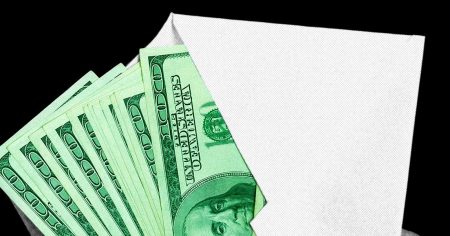Anton Lipkanou, President / Partner at Delve Partners.
Several years ago, I watched a short video of a bicyclist using a “Superman”-style position to blow past other racers.
It seemed unfair. He wasn’t even pedaling.
But on second thought, I realized he was playing entirely fair. He had the same resources (particularly, access to knowledge of basic physics) as the other bikers. He was simply applying these resources in a better way. What I believe truly set this cyclist apart was his systematic process for creating this advantage. The technique he used was not thanks to a “eureka” moment in the saddle. He and his coaches likely spent hundreds of hours studying aerodynamics and experimenting with different riding positions to improve his speed. Eventually, they achieved exponential results they might not have even thought possible. His impressive performance was likely the product of extensive process-based training.
The idea of an “unfair” advantage comes up quite a bit in my conversations with clients. After all, everyone seems to want an advantage that stays fully within the rules of business and life and yet is so powerful it seems rigged. Marketing leaders are no exception. There are a few questions to consider, however:
• What does that “unfair” advantage look like? I hear that it is the ability to do more with less or, at first, more with the same. The economic outlook is dire, budgets are limited and investors are hungry for returns. Brands are expected to dominate their industries without outspending the competition. This theme has emerged in every client survey conducted by my company.
• How can you get the advantage? My answer is the right process.
Developing The Right Process
A repeatable process for achieving clearly defined short-term wins ensures the long-term sustainability of a well-defined “unfair” advantage. Without precise definitions, it’s too easy to get caught up in the hype around marketing concepts that look reasonable at first glance but are certainly not “silver bullets.” For example:
• Consumer obsession: Are brands supposed to have an obsession—defined in the dictionary as an excessive preoccupation with a particular thought, feeling, person or object—with their entire consumer portfolio as it is now? What about growing the business by acquiring new consumers?
• Integration of data and media: In the marketing industry, it is common to hear about media agency capabilities combined with analytics consulting and some form of data science. There is lots of talk and little clarity about what is actually going on here.
• Automation: This could include everything from automated insights in analytics platforms to predictive modeling and dynamic creative. The idea of putting so many aspects of your marketing on auto-pilot could drain the biggest of budgets dry in months.
• Look-alike modeling: Does this mean relying on depersonalized cookie signals to find individuals who want to buy your products today? What could possibly go wrong?
We can do better here.
Start by getting more specific about what a seemingly “unfair” advantage to do more with less means in business terms. I say it means dominating the slice of your market that contributes the most to your bottom line. This market slice will consist of your best consumers who are highly interested in buying offerings very similar to yours. When a significant majority of them choose to buy your offering, which they can’t find anywhere else, you effectively dominate this market slice.
Next, put those half-baked marketing concepts listed above, such as consumer obsession, back into the oven, mix in a little logical reasoning and battle-won insights, and delineate the incremental wins that will lead to the domination of that market slice.
Finally, put these incremental wins into a sequential, cyclical process where each one naturally progresses to the next indefinitely.
Here’s an overview of the resulting process I recommend:
1. Collect and connect the right data about your consumers.
2. Find your current top 20% highest-potential consumers.
3. Find all the best consumers exactly like them.
4. Be journey-obsessed with giving superior experiences to them all.
5. Measure the impact you’ve driven on your total revenue and share of them all.
Using Unconventional Thinking To Gain An Advantage
A little critical and somewhat unconventional thinking can go a long way toward giving yourself that “unfair” advantage everyone wants. To help put this into perspective, I’ll share how my colleagues and I rethought consumer obsession.
In a recent industrywide survey of marketing leaders, we found that many CMOs and marketing directors were struggling to use data to improve their marketing results meaningfully. A few were doing significantly better than others. One thing these outliers had in common was they did not care about most consumer data they were taking in. Instead, they were deeply analyzing the data gathered on a certain percentage—usually that magical 20%—of consumers generating the most revenue for their organizations without spending time and money on the others.
Consumer portfolio management and lifetime value marketing are not new. It makes sense that marketers need to get more value from the consumers they bring in. Therefore, the logical approach is to find and engage people more likely to become your consumers, spend more with you than competitors’ average consumers and stay with you longer.
What is new (as far as I’m aware) is the idea of approaching your acquisition and engagement initiatives in terms of numbers-driven, Pareto-principle obsession. It’s fair to say that being obsessed with your best consumers means spending 80% of your marketing efforts and budget on your top 20% of most valuable current and potential consumers.
This kind of consumer obsession is all about taking actions that drive meaningful results. I’m not just talking about return on ad spend here. You’ll need to be looking at overall profitability and deeply understanding your consumers.
How do you do this? You need to have the right data and analytics capabilities in place. Assess your current data and analytics capabilities to identify pain points with your people, processes or technology. Then, expect to spend 80% of your resources on getting truly obsessed with your top 20% of consumers. Faint hearts never won an “unfair” competitive advantage.
Forbes Business Council is the foremost growth and networking organization for business owners and leaders. Do I qualify?
Read the full article here










